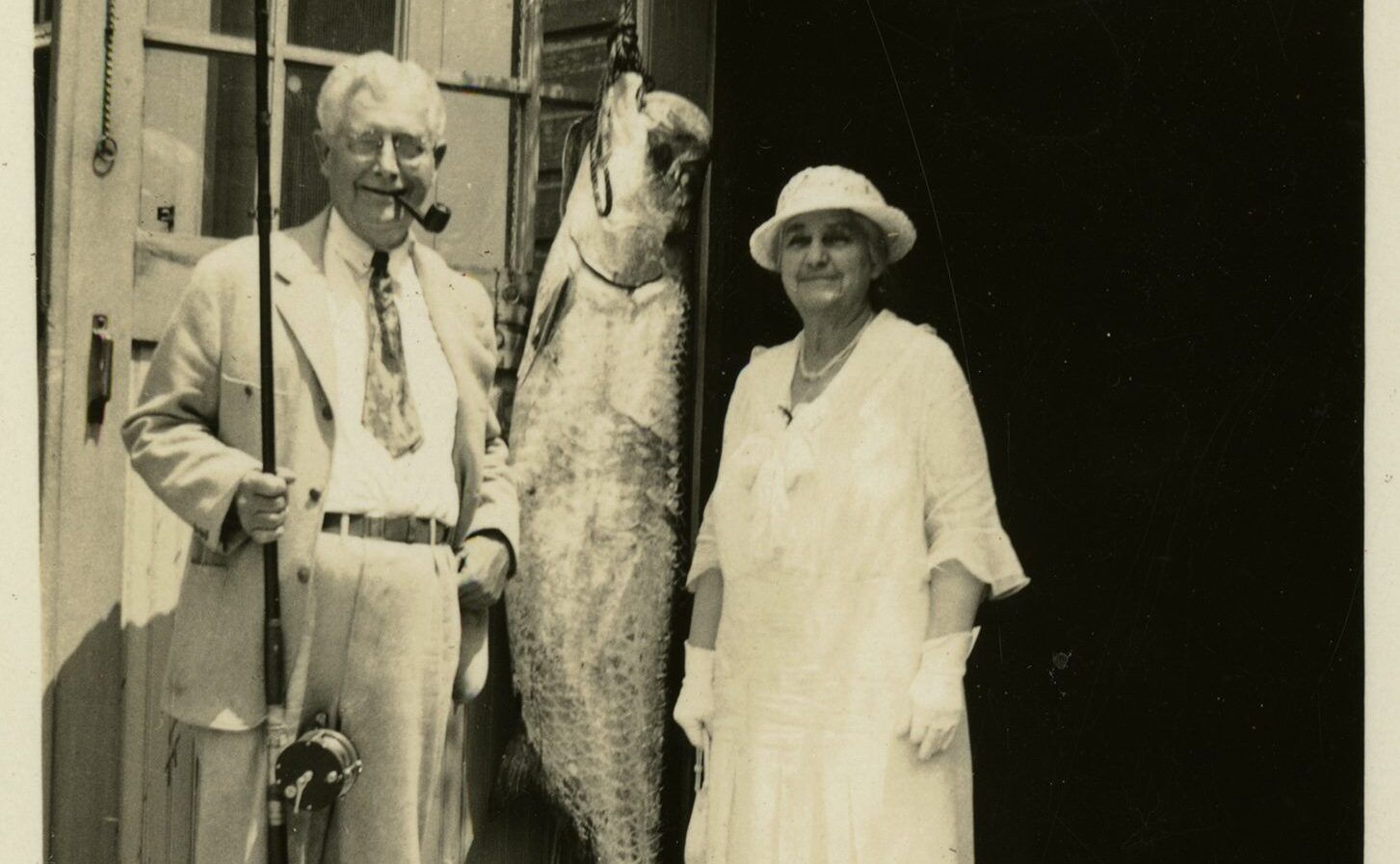Essay: Tarpon memories imprint deeper with a trophy on your line

BY CAPT. VAN HUBBARD
Tarpon were so abundant that big game sportfishing was created here.
The giant fish splashing and jumping everywhere, driving fishermen crazy. Teasing spectators because we lacked the tackle to subdue them. On March 14 of 1885, William Woods landed a 93-pound tarpon in Tarpon Bay, the first recorded catch of big game fish on rod and reel. The Edison-era folks around Fort Myers created the initial reels and rods to tangle with silver kings.
Thomas Edison purchased his winter home here because of the climate and fishing. The fishery sprouted, then multiplied as tackle developed with better technology and boats. From Naples to Boca Grande, we were the center of big game sportfishing.
Visit our remaining local institutions like the museum at Whidden’s Marina and The Gasparilla Inn. You can still discover old photographs from the glory days of Boca Grande Pass fishing. Folks fished in coats and ties. It must have been hot.
Tarpon have been caught here every month of the year, but they are more likely from April through October with warmer waters. The peak fish migrations are during May and June when schools congregate forming spawning groups. I’ve seen the entire pass overflowing with thousands of frolicking silver kings as they prepare to move offshore. Our Pass fish usually weigh from about 50 to 150 pounds and 200-pound fish are not unusual. You can get a replica mount without killing the fish, just ask your guide for details.
Launches towed the early guides in a string of row boats to and from the Pass. They picked you up after drifts and reset your boat. You were dependent. While I do understand it won’t happen, sometimes I wish we went back to no motors operated around the schools of fish. People tend to get excited and chase the fish. Scared fish don’t feed.
Traditional Pass tarpon fishing was developed and tweaked to catch fish with the least disruption and best conservation of fish. The one exception was mounts where we used to kill fish. We no longer kill tarpon as of 1988. This system was easy for fish, guides and fishermen. It’s simple for the captain to pull your fish boat-side, snap your photos and break the fish off while it’s strong. Jumping fish create spectacular memories and photos. You can’t imagine all their contortions until you see it in slow motion on video.
The traditional gear is strong and capable of subduing the big fish efficiently enough to release a still robust fish. Braided lines are marked with green thread at 42 feet and red at 60. This allowed us to drift our offerings gliding them just above the irregular bottom to hungry fish. Baits are live squirrelfish, crabs, shrimp or mutton minnows. The leaders, about 14 feet, were long to keep the powerful white lines out of the fish’s sight. Wire was the old choice and needle eye hooks fell away from your release because they had no eye holding them in the fish. Fluorocarbon is preferred now. Stronger gear allowed us to lead our trophy away from the other boats and shark filled waters, up toward the north bar. We could release fish in shallow waters, enhancing the ability to recover safely.
Boats improved with inboard motors allowing us to fish whenever we desired, equipment also continued to develop. When outboards became powerful enough to operate in the strong currents, new challenges developed. They were referred to not affectionately as “ass grinders.”
Growth rarely enhances our experience. The Boca Grande “jig” almost destroyed the tarpon fishery. It allowed captains to aggressively chase and harass schools of fish. It was outlawed in ‘95 thanks to the persistent work of Save the Tarpon. Presently the discovery and marketing of our amazing fisheries have increased business. More folks coming adds challenges to locate and catch happy fish. More is not always better.
New folks can experience our amazing fisheries, the best they will ever see, and help our local economies. Unfortunately, their adventures can’t begin to compare in fish numbers with the good old days. Each generation had its own good old days. A. W. Dimock, a well-known outdoor writer in the early 1900s, caught 354 tarpon in 52 days.
Let me be clear, we do still enjoy very productive fishing trips. It’s just with special conditions and not as frequent, with a lot more company. Happy fish are challenging to locate many days. If your guide suggests certain times, your odds improve if you take his advice! Even if it’s not your desired time. We want to give you the best experience possible, happy clients promote our fishery and business.
The opportunity to see hundreds of silver kings frolicking and splashing in crystal clear blue-green waters is certainly worth the price of admission. The memories just imprint deeper with a trophy on your line. Our tournaments offer unique opportunities to compete, plus observe the best captains and anglers at peak performance. Dates are selected to match scheduling, moon phases and tide conditions; the weather can insert complications.
There are always great parties for everyone to enjoy.
Boca Grande is an extremely special place; I was spoiled by discovering it a half century ago. Make time to explore our unique paradise. Explore Charlotte Harbor’s back country and history while visiting. Check out our excellent restaurants and local cuisine. Golf cart around the side streets and see the older buildings and structures. Our plant life is beautiful, especially Banyan Street. There is no other place like Gasparilla Island.
Welcome aboard.
Editor’s Note: Van Hubbard’s column Hook, Line and Sinker appeared in the Beacon beginning in 1988. We are delighted to welcome him back.









